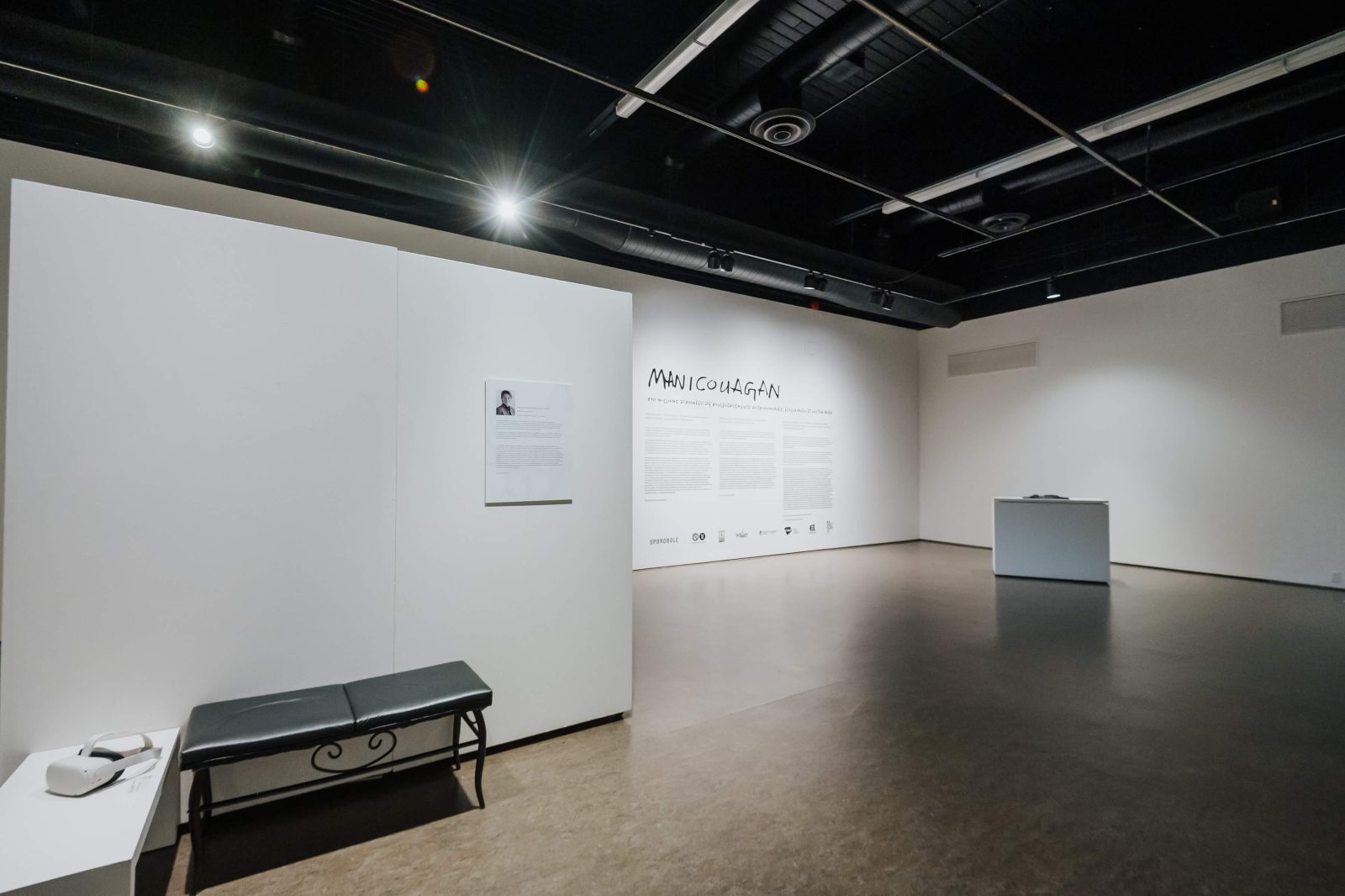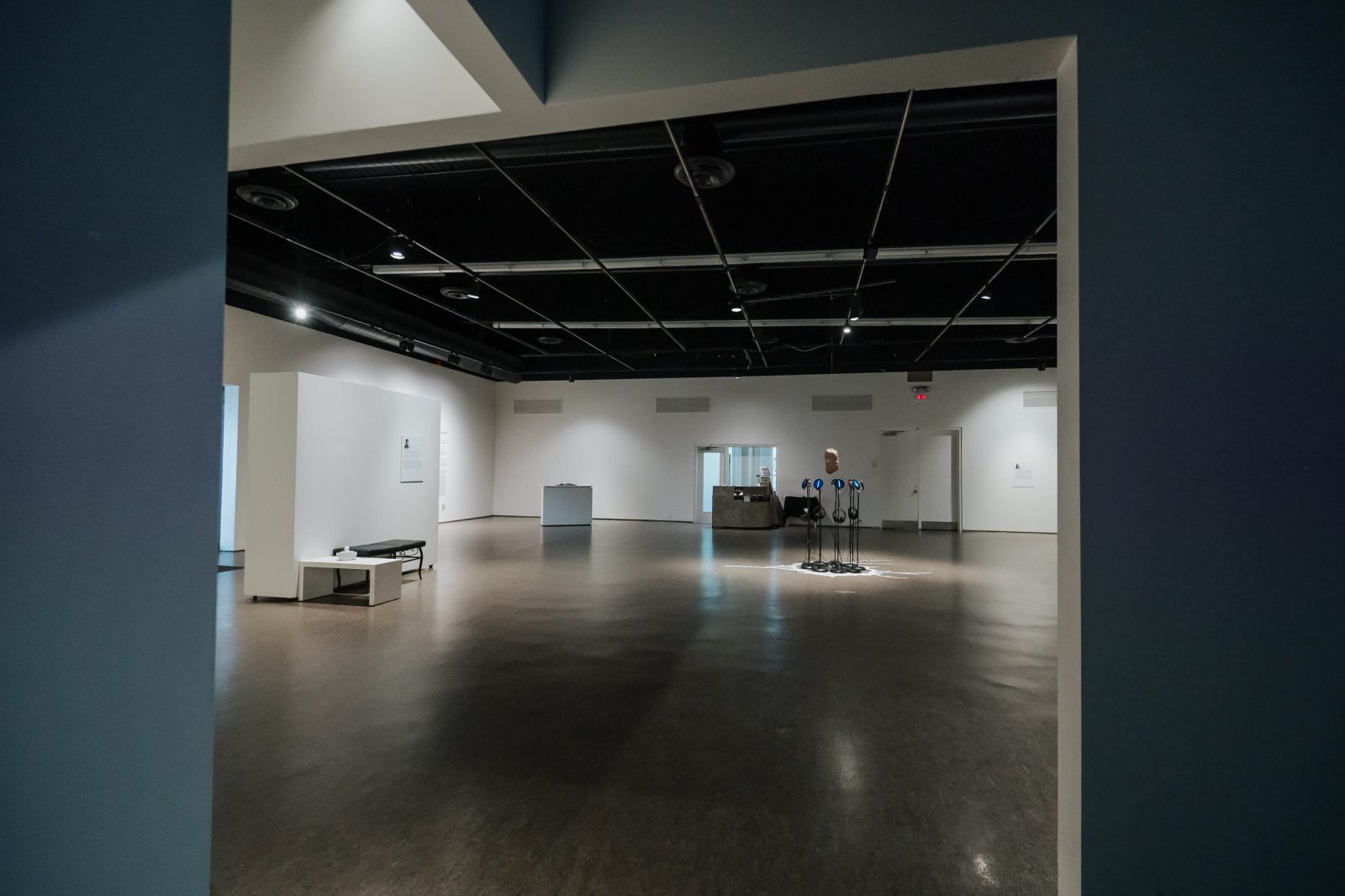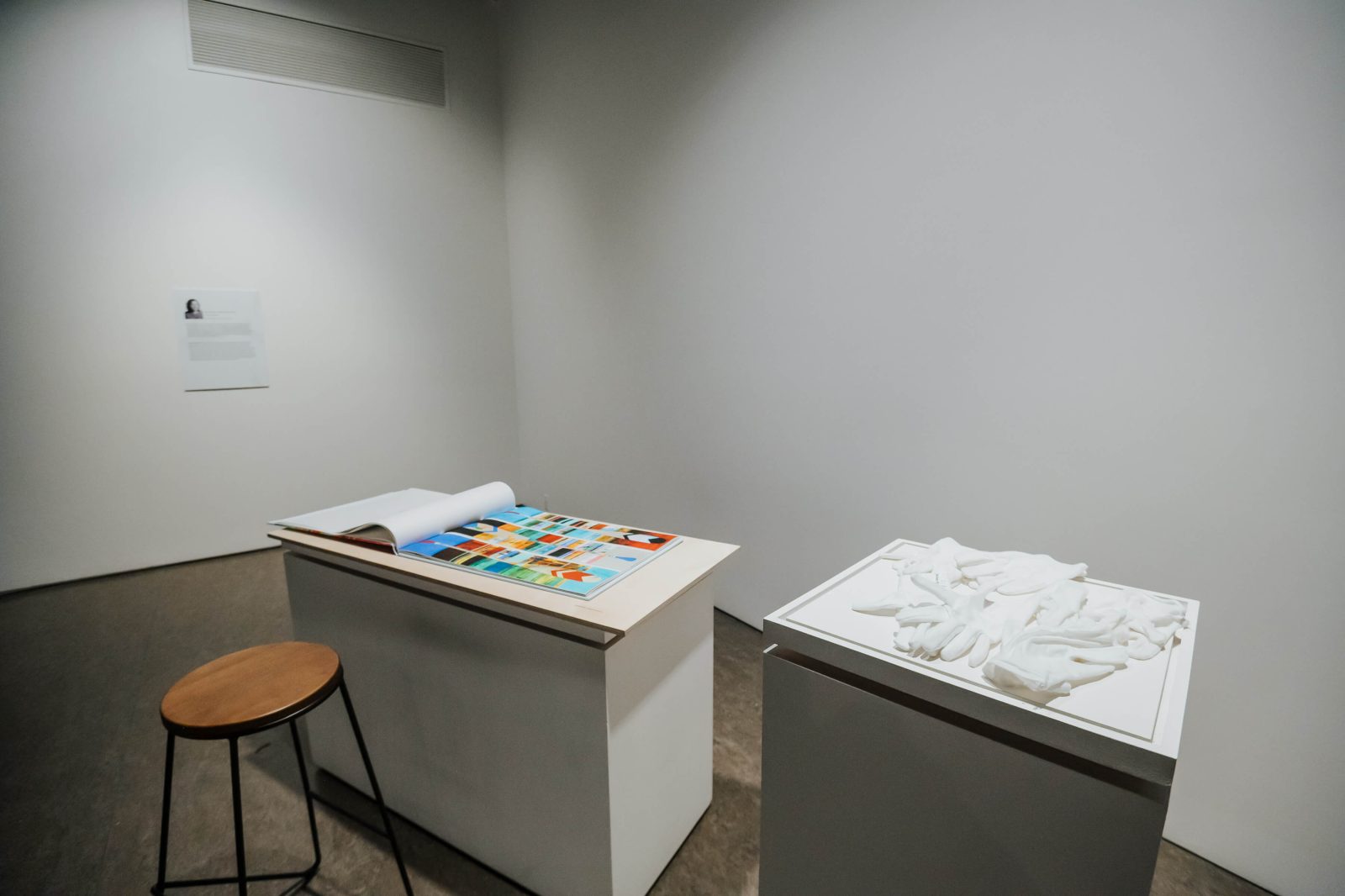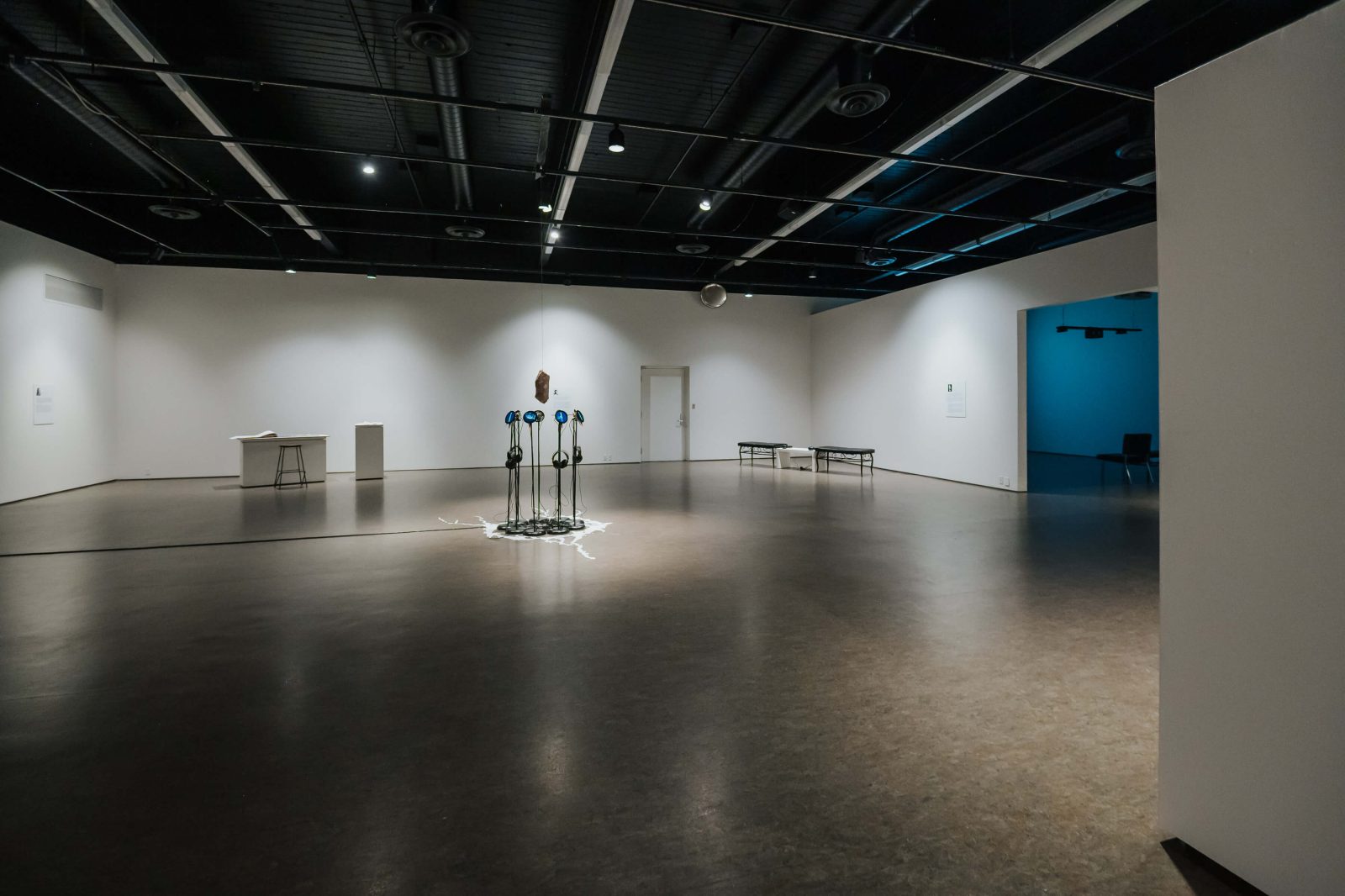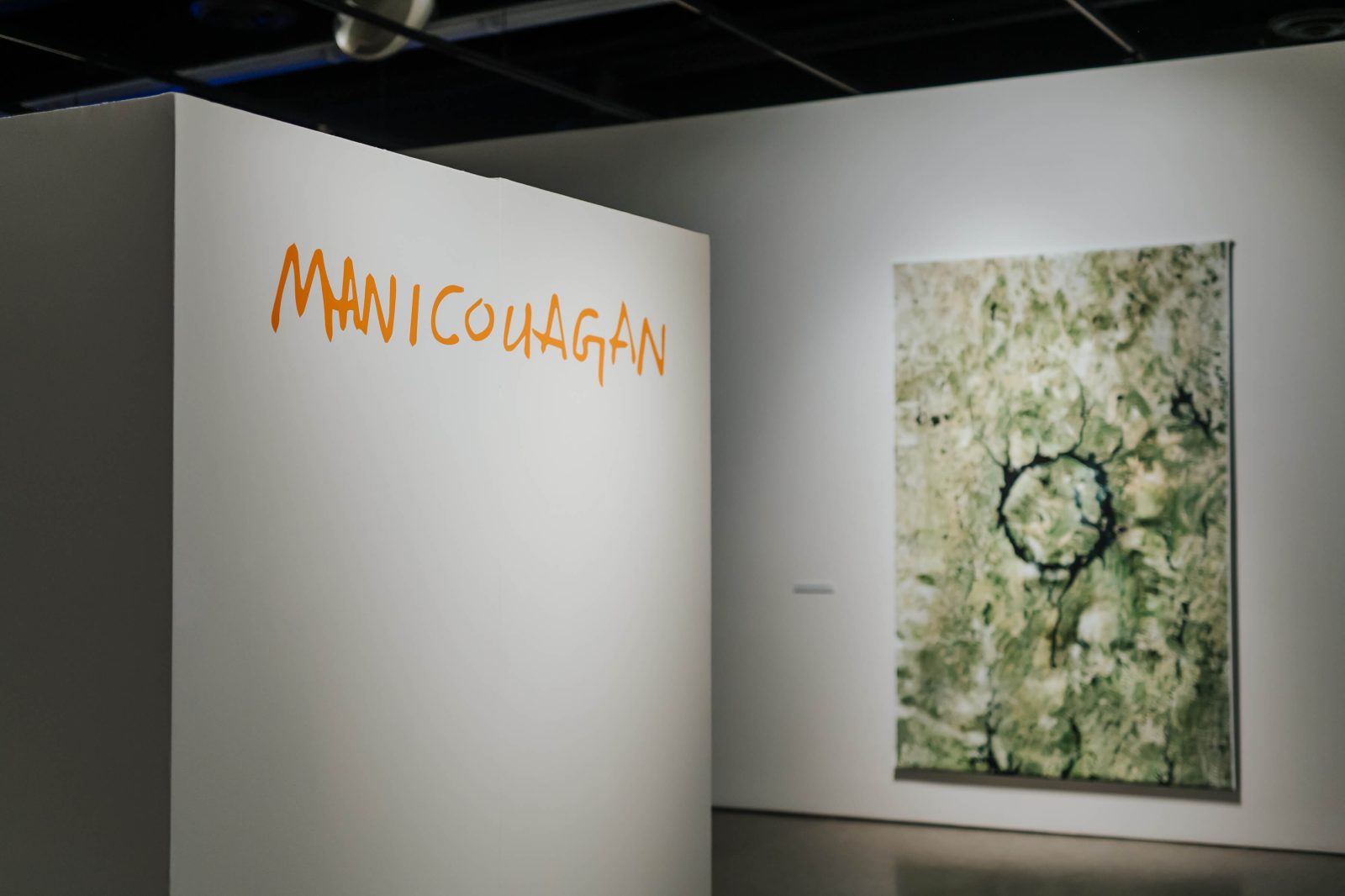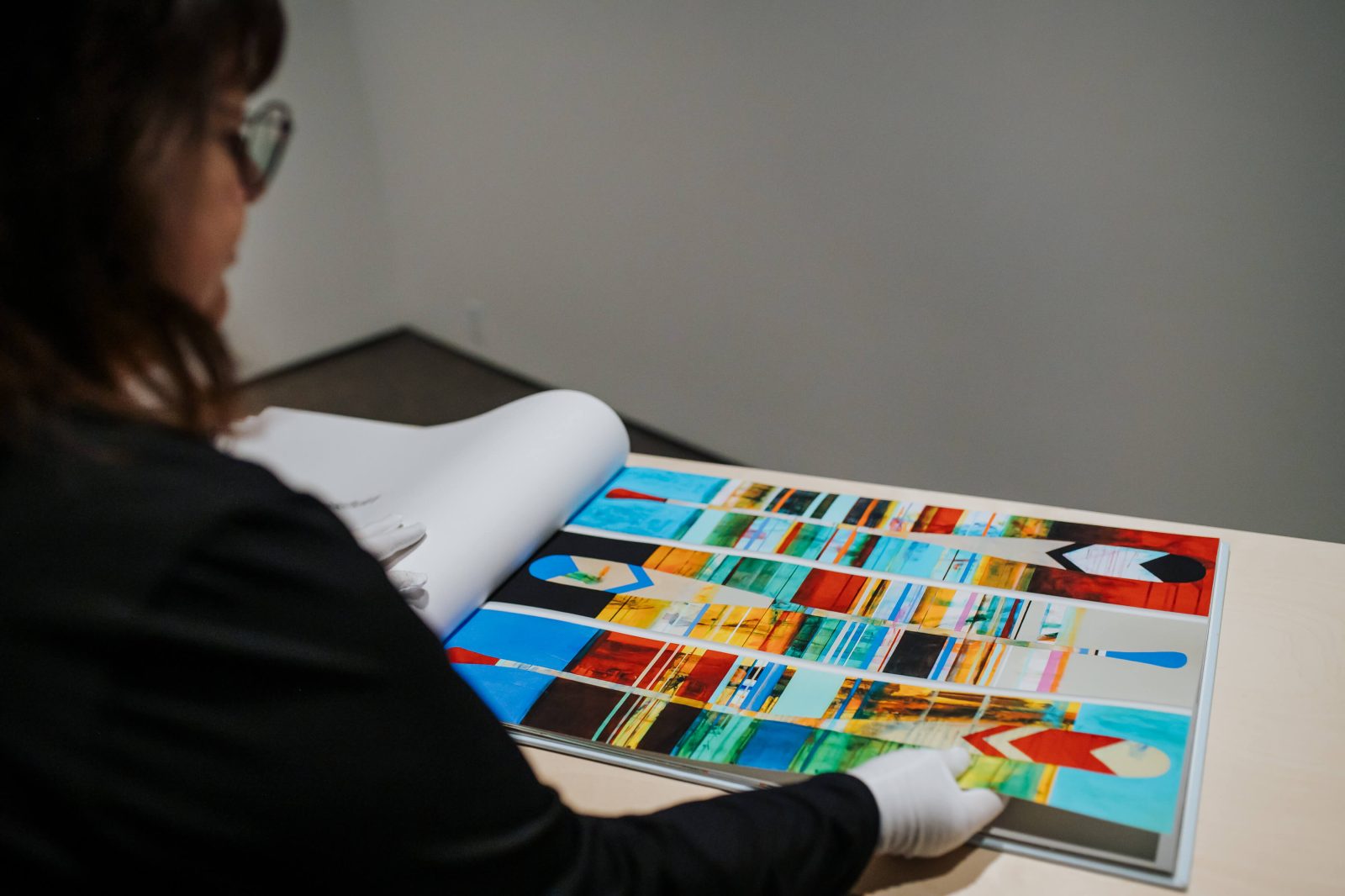Manicouagan Exhibition
First stop on the tour: VOART Exhibition Center
Manicouagan: 210 million years of astronomical, environmental and historic upheaval
Initiated in 2018 by French artist Paul Duncombe, the project Manicouagan originally set out to explore the vestiges of the geological cataclysm that had so indelibly marked the region some 210 million years ago when a meteorite came crashing down, creating one of the largest known impact craters on earth.
This land also bears witness to the ancestral Innu presence that dates back over 8,000 years, as well as to the social shifts that rocked Québec of the 1960s. Between 1959 and 1968, Hydro-Québec built the immense Daniel-Johnson dam at the mouth of the Rivière Manicouagan, whose source is in the crater. For Québec, this massive construction project, a veritable symbol of the “Quiet Revolution,” also represents the passage from the status of a colonized nation struggling for freedom to that of a colonized nation turned colonizer.
The exhibition brings together the work of six individuals, each of whom was invited to survey, study and experience the region for a two-week period in 2021. While Innu poet and author Maya Cousineau Mollen probes cultural wounds and the fragility of peoples in a colonization context, Québec writer Louis Hamelin examines the area from a historical, ethnological and environmental perspective. French artist Paul Duncombe and geomatics specialist Erwan Gavelle, in turn, map the Réserve écologique Louis-Babel as a series of geological, geographic and ecological portraits, while undersea explorer Nathalie Lasselin invites us into the deep red waters of the reservoir, which harbours a drowned forest, the ghostly remains of an erased land. The entire project crystallizes under the unwavering gaze of Kanatakhatsus Meunier, a Kanyen’kehà:ka documentary filmmaker who highlights the lasting trauma brought about the perception of this region (by the majority Québec population to the south) as distant and uninhabited, and therefore open to exploitation. Collectively, these works elucidate a majestic land, witness to natural upheavals, social liberation, colonization, historical wounds, social conflict and environmental issues.
Éric Desmarais, curator
Co-produced by Sporobole and Station Mir/Festival ]interstice[, the exhibition is toured by Sporobole.
The expedition was co-produced by Sporobole, Station Mir and La Tonne, with support from the Conseil des arts et des lettres du Québec (CALQ), the Conseil des arts du Canada (CAC), the French Consulate in Quebec City and the Normandy region.
The entire team extends its warmest thanks to the Conseil des Innus de Pessamit, Station Uapishka and Saguenay aventures.
Credits: Paul Duncombe, Manicouagan, 2022, detail from the exhibition presented at Abbaye-aux-Dames, Caen (Fr) as part of the ]interstice[ #16 festival, produced by Station Mir.
Manikuakanishtiku : 210 « millions » tatupipuna ishpish mishta-atussemakak anite uashkut eshi-takuaki tshekuana, inniun mak tipatshimuna
Uenuipanitat umenu anite pipun 2018 ue tshishe-mishtikushu tipan ka ishi-pikutat tshekuannu e tutak Paul Duncombe, ne atusseu ua tutakanit anite Manikuakanishtikut ushkat anu nenu apatenitamupan eshinakuannit assinu ka eishpanit tshekuan anite assit ka mishta-katshitaitshemakak anite assit ka patshitik ashini météorite eshinikatet shash 210 millions tatupipuna. Eukuan ne peiku ka mishta-itenitakuak ka pakunaik assinu e tshikaienitakuannit.
Anite ne assi iapit nukuan innuat ka pet takuenat shash anu 8000 tatupipuna mak ishpish mishkutshipanit inniun mamu katananut ishpish aiatshipatakanit Uepishtikueiau-assi anite ut 1960. Anite ut 1959 mak 1968, uet uinnuat Manikuanishtiku, uetinak unipim anite pekunianit, Hydro-Québec tshimatau ushkutiminu Daniel-Johnson. Uepishtikueiau-assi uin, anite kaitushkannut, eukuan tshitshue tshissinuatshitakan Metinu eshpanit, iapit nametau anite eshinniunannut tshetshi tipenimitishun takuak ashit nenua kutaka eshinniuniti ka taniti anite mak ka utinaminiti nenu assinu.
Ne kauapataniuenanut mamushtau atusseunnu kutuasht auennua ka uishamakanniti tshetshi tipaitsheniti, tshetshi natu-tshissenitaminiti mak tshetshi inniuht anite nenu assinu kutunnu ashu neu (14) tatutshishikua anite nenu pipunnu 2021. Eku ne uin ashineu-aimunnu ka tutak mak uin ka tshitshipanitat ue innushkueu Maya Cousineau Mollen tshitapatamu ishpish pikupitakannit aitunnu mak shitu innua e taniti anite ka tutakannit tshetshi tanannut, kamashinaitshesht Uepishtikueiau-assit Louis Hamelin ishi-uauitamu nenu assinu anite tipatshimuna, e nanatuapatitshenannut assit mak eshinakuannit inniunnu. Uinuau etenitahk, tshishe-mishtikushu Paul Duncombe mak kanu ka atusseshtuat Erwan Gavelle natuenitamuat tshetshi tutuakanniti assiu-kanua ne e uitakanit anite tshatapatakanit assi Louis-Babel tshetshi mamuapikashuht akunakanat e katshitaikanit assi, eishinakuak assi mak inniun. Mashten, kananatuapatitshet nipit Nathalie Lasselin uishameu kassinu auennua anite kamikuakamuniti nipinu mak atamipekut ne ka mautakanit nipi kiatat minuashkuanu ka nissipitakannit, enukuak ne assi ka pikunakanit. Kassinu ne e tshitapatakanit eshinakuak atusseun ui ishinakutakanu tshetshi eka matshipanit ue eshi-uaptak Kanatakhatsus Meunier, mashinaikannu ka tutak anite uetshipanit Kanienkeha :ka, e tshissenitakutat ka ishpish tshitimashinakutaniti (Uepishtikueiau-innua) etenitahk nenu anite eshi-tipenitamumakannit assinu miam kataku tekuannit mak tshe eka tshi anite tanannut. Ne eshinakuak atusseun minu-tshikanakuan ishpish mishat ne assi uet nukuak katshi mishta-ishpanit anite ne assi, eka ka tshipautunanut anite eshinniunanut, kauapishiht tekushiniht, pakupanit tipatshimun, mashikatun tekuak anite mamu katananut mak eshpaniuet anite ne assi e tshitapatakanit.
Éric Desmarais, katshitapatak tshetshi minupannit
📸 Courtesy Voart Exhibition Centre

